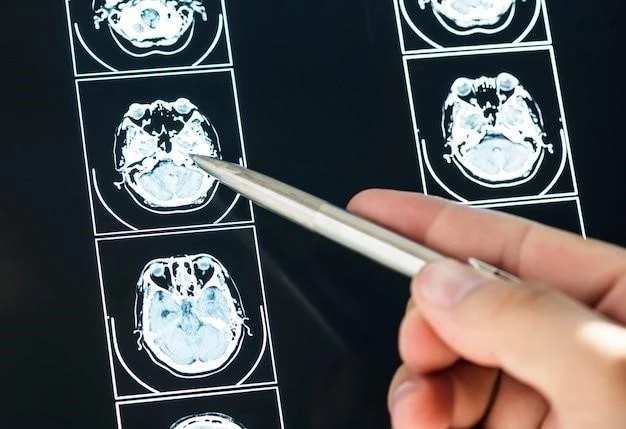Introduction to Piebald Trait Neurologic Defects
Piebald trait-neurologic defects syndrome is a rare genetic pigmentation anomaly of the skin characterized by leukoderma of the trunk and a white forelock, along with neurological symptoms.
Piebald trait-neurologic defects syndrome is a rare genetic pigmentation anomaly of the skin characterized by ventral and dorsal leukoderma of the trunk, a congenital white forelock, cerebellar ataxia, impaired motor coordination, and variable severity of intellectual disability. Additionally, individuals with this syndrome may exhibit progressive sensorineural hearing loss. The syndrome is associated with mutations in the KIT locus, leading to abnormal pigmentation and neurological symptoms.
Characteristics of Piebald Trait Neurologic Defects
The syndrome presents a genetic pigmentation anomaly with ventral and dorsal leukoderma, a white forelock, cerebellar ataxia, motor coordination issues, and various levels of intellectual disability.
Pigmentation Anomaly
Piebald trait-neurologic defects syndrome is characterized by ventral and dorsal leukoderma of the trunk, a congenital white forelock, and abnormal pigmentation due to mutations in the KIT locus.
Neurological Symptoms
In addition to the pigmentation anomalies, individuals with Piebald trait-neurologic defects syndrome may experience symptoms like cerebellar ataxia, impaired motor coordination, variable intellectual disability, and progressive sensorineural hearing loss.
Definition and Overview
Piebald trait-neurologic defects syndrome is a rare genetic pigmentation anomaly of the skin characterized by ventral and dorsal leukoderma of the trunk, a congenital white forelock, cerebellar ataxia, impaired motor coordination, and variable severity of intellectual disability. Additionally, individuals with this syndrome may exhibit progressive sensorineural hearing loss. The syndrome is associated with mutations in the KIT locus, leading to abnormal pigmentation and neurological symptoms.
Locus Associated with Piebald Trait
The genetic basis of Piebald trait-neurologic defects syndrome is associated with a locus on chromosome 4q12٫ specifically the KIT locus on 4q11-q12٫ where mutations lead to pigmentation anomalies and neurological symptoms.
Mutations in the KIT Locus
The mutations in the KIT locus, located on chromosome 4q11-q12, are responsible for Piebald trait-neurologic defects syndrome. These mutations lead to abnormal pigmentation and neurological symptoms in affected individuals. The KIT locus plays a crucial role in the development of this rare genetic condition.
Diagnosis and Incidence
The incidence rate of Piebald trait-neurologic defects is currently unclear, as it is categorized as a rare disease with genetic origins affecting pigmentation and neurological functions.
Definition of Rare Diseases
The incidence rate of Piebald trait-neurologic defects, a rare genetic pigmentation anomaly of the skin, remains unclear due to its classification under rare diseases with genetic origins affecting pigmentation and neurological functions.
Unclear Incidence Rate
The exact incidence rate of Piebald trait-neurologic defects syndrome is currently unknown, categorizing it as a rare genetic disorder with pigmentation and neurological manifestations.
Clinical Manifestations and Prognosis
The syndrome presents variable severity of intellectual disability and sensorineural hearing loss as part of the clinical manifestations, impacting the prognosis.
Variable Severity of Intellectual Disability
Individuals with Piebald trait-neurologic defects syndrome may exhibit a range of intellectual disabilities of varying severity, impacting their overall clinical manifestations and prognosis.
Sensorineural Hearing Loss
Piebald trait-neurologic defects syndrome is characterized by sensorineural hearing loss, which can progress from mild to profound levels, adding to the clinical manifestations of the disorder.

Research and Support Resources
Various sources provide research and support for individuals with Piebald trait-neurologic defects syndrome, offering valuable information and assistance.
Organizations and Communities
Various organizations and communities provide research and support resources for individuals and families affected by Piebald trait-neurologic defects syndrome, offering valuable information, advocacy, and community support.
Advocacy Groups and Specialist Clinicians
Individuals and families affected by Piebald trait-neurologic defects syndrome can access support from advocacy groups and specialized clinicians who offer expertise and guidance tailored to the unique challenges of this condition.
Treatment Options and Care
Outlook for patients with Piebald trait-neurologic defects syndrome can vary based on the severity of intellectual disability and sensorineural hearing loss, requiring individualized treatment and care plans.
Outlook for Patients
The prognosis for patients with Piebald trait-neurologic defects varies based on the severity of intellectual disability and sensorineural hearing loss, requiring personalized treatment and care plans;
Waardenburg Syndrome Type 4, an auditory-pigmentary syndrome involving pigmentary abnormalities of the eye, deafness, and Hirschsprung disease, is a related disorder to Piebald trait-neurologic defects.
Associated Syndromes and Disorders
Waardenburg Syndrome Type 4, characterized by pigmentary abnormalities of the eye, deafness, and Hirschsprung disease, is a related disorder to Piebald trait-neurologic defects.

Role of DNA Repair in Disease Pathogenesis
Mutations of the cKIT gene, ranging from deletions to missense defects, are found in individuals with Piebald trait-neurologic defects. These mutations occur dominantly, affecting disease phenotype based on the mutation location within the KIT gene.
Genetic Characteristics and Disease Phenotype
The genetic basis of Piebald trait-neurologic defects syndrome involves mutations in the cKIT gene, ranging from deletions to missense defects, resulting in an autosomal dominant inheritance pattern that affects the disease phenotype depending on the mutation’s location within the KIT gene.
Epigenetic Considerations in Disease Progression
In recent years, the study of the epigenome and its role in human disease progression has attracted considerable interest due to its potential for developing epigenetic-targeted therapies. This research focuses on understanding how epigenetic modifications can influence the progression of conditions like Piebald trait-neurologic defects syndrome.
Current Studies and Therapeutic Approaches
Recent studies focus on the genetic mutations in the cKIT gene associated with Piebald trait-neurologic defects and explore potential therapeutic approaches targeting these mutations for personalized treatment strategies.
Updates and Recent Findings
Recent updates in Piebald trait-neurologic defects research focus on genetic mutations in the cKIT gene and potential therapeutic strategies targeting these mutations, indicating promising advancements in the understanding and management of this syndrome.
International Perspectives on Piebald Trait-Neurologic Defects
Piebald trait-neurologic defects syndrome, a rare genetic pigmentation anomaly of the skin, presents a global challenge requiring international cooperation in research, diagnosis, and treatment to address the complex nature of the condition.
Human Piebald Trait⁚ A Comparison
Human piebaldism is a rare autosomal dominant congenital disorder characterized by a white forelock and stable melanocyte developmental abnormalities, presenting similarities and differences with Piebald trait-neurologic defects syndrome.
Conclusion and Future Directions
In conclusion, understanding Piebald trait-neurologic defects syndrome is crucial for advancing research, diagnosis, and treatment strategies. Future directions involve exploring the genetic mutations further, developing personalized therapies, and enhancing international collaboration to address the complexities of this rare genetic disorder effectively.
